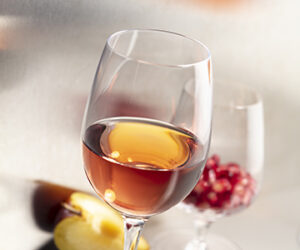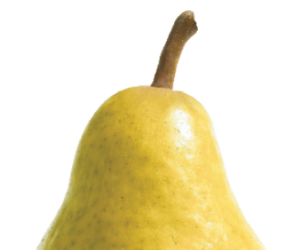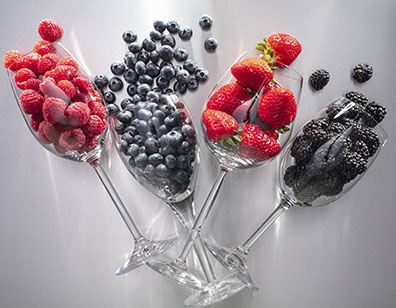
Relative to grape wine, “berry wine” is a diverse category, encompassing anything from strawberries to blueberries to uncommon local berries few have heard of. The general idea is the same as making red wine: Crush and ferment berries, press or strain, rack and age, bottle, voila! But where grapes, if variety is well matched to site, often may need no other ingredients beyond the fruit itself and sulfites, with berry wines, ingredients like water, sugar, and acid may be critical to success.
However, when crafting a berry wine, that’s just the tip of the iceberg for what you may want to do in the winemaking process. There are many factors, styles, options, tips, and tricks to consider. I spoke with some gold medal winners from recent WineMaker International Amateur Wine Competitions in the berry wine category who were generous enough to share their award-winning recipes with us, as well as their best pointers. Let’s look at some of the major factors to consider in berry winemaking and then see what these folks had to say.
Fruit Options
A major consideration is what kind of fruit you use: Fresh, frozen, puree, fruit base, concentrate, or juice. Most berry winemakers opt for frozen fruit or freezing the fresh fruit they buy — as the freezing process breaks down cell walls and allows color and flavor to extract much more readily.
Using fresh fruit, even if you choose to freeze it, generally allows the winemaker the most control over the fruit they are using. They have the ability to determine when to pick it and to sort out any rotten or damaged fruit — with other options you likely won’t have the same level of quality control. If using fresh fruit, sort out any you don’t want, and give a rinse if the fruit is dusty or dirty, or to rinse off some of the chemical sprays used while it was growing (even organic produce sees chemical treatments, and probably more frequently, though they are likely more benign chemicals). For the purpose of my descriptions, fruit bases are cans of fruit packed either in their own juices or water, such as those sold by Vintner’s Harvest. Note that other products that are fruit concentrates are sometimes sold as fruit bases — these products will have significantly higher sugar concentrations.
For fresh, frozen, fruit base, or pureed fruit, you’ll want to use a strainer bag (the finer the mesh, the less racking and settling will be necessary later). For fresh and frozen fruit and fruit base, you can mash the fruit before or after adding to the bag. Tie your bag before adding it to the fermenter to keep berry solids contained in the bag and minimize the number of required rackings later on.
If using juice or concentrate, some of the hassle of processing will be removed — you’re essentially making a white wine, so no strainer bag or repeated rackings will be necessary for a clean berry wine. However, fresh and frozen fruit are likely to have fewer chemical additives than concentrates, with fresh being intended for immediate consumption and frozen being a safe and stable relative to juice and concentrates. If you choose juice, look for high-quality juice and be sure it does not contain potassium sorbate, which can inhibit the yeast. Pasteurized or sterilized juices are OK.
Other than fresh fruit, all of the other options should be available throughout the year — i.e. outside of your desired fruit’s actual season. Frozen fruit is available online, or perhaps at your local grocery store. Juice and concentrate should be available online and at grocery stores. Fruit bases and purees can be found at many home winemaking supply stores and websites.
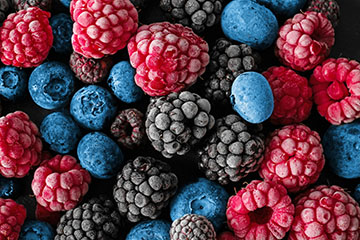
Let’s hear from the winners
It’s worth noting that all but one of the award-winning berry winemakers interviewed for this story (who were selected based on their judging scores, number of medals in recent years, and medal win rate for their berry wines) choose to use frozen fruit from the store or fresh fruit that they freeze themselves prior to thawing and making wine. None of the winemakers I spoke with make berry wines from concentrate, juice, or puree. That isn’t to say that winemakers can’t or don’t win gold medals with juice or concentrate bases — but it does show that when judged among other wines, the winemakers using fresh fruit (and sound winemaking practices) often stand out. All of the additives discussed in the interviews and recipes that follow are available at most home winemaking supply stores and websites.
Blueberry-Raspberry-Blackberry Blend
Looking for more berry winemaking advice from home winemakers, I first spoke with Mike Dault of Edgewood, Kentucky, who won the 2019 Best of Show Country Fruit award with a 40% blueberry, 30% raspberry, and 30% blackberry wine (as well as another gold medal for a 90% blueberry, 5% raspberry, and 5% blackberry blend). As opposed to making varietal wines of each berry and then blending them afterwards, Mike blends the berries at the desired ratios himself before adding to the mesh bag, prior to fermentation.
Mike uses 15 lbs. (6.9 kg) of frozen berries he gets from the grocery store for a 3-gallon (11.5-L) batch of wine. Mike said he’s found that frozen berries generate much more color than fresh, locally-sourced fruit. After thawing, while still in a mesh bag, he crushes the berries with a rolling pin. After crushing the berries he adds them to a coarse strainer bag for fermenting in a bucket. He ties the bag inside the bucket to avoid spilling solids into his fermenter and then adds the following:
• 2 gallons (7.6 L) spring water
• 4 g potassium metabisulfite (KMBS)
• 1.5 tsp. acid blend
• 1⁄2 tsp. wine tannin
• 2 tsp. pectic enzyme
• 9 cups (4 lbs./1.8 kg) cane sugar
• 2 cups (0.5 qts./0.5 L) red wine concentrate
“Stir vigorously. The must will brown some, owing to the KMBS — this is normal. Specific gravity should be between 1.080 and 1.090 (19.3–21.6 °Brix). If it is lower, stir more and recheck before adding additional sugar. Cover with a cheese cloth and keep around 72 °F (22 °C),” he says.
Mike pitches his yeast after 36–48 hours (he uses Lalvin 71B-1122), and once fermentation starts he puts the bucket’s lid on with the airlock inserted. Two or three times a day he stirs the must and two days after the onset of fermentation he adds 1.5 tsp. of yeast nutrient.
After one week, Mike removes the bag of fruit and squeezes it into the bucket before transferring the fermenting wine to a 3-gallon (11.5-L) carboy with an airlock. At week three, he moves it back to a bucket and adds:
• 1⁄8 tsp. KMBS
• 1.5 tsp. potassium sorbate
After those additions he stirs vigorously for 5 minutes, then adds:
• 3 cups sugar (Mike notes that backsweetening should be done to taste, and notes you can add more later if you’d like additional sweetness in the final wine).
Again, stir vigorously for 5 more minutes. Then add:
• Super-Kleer (a clarifier — be sure to add the various packets in order).
Rack back to your carboy to let it settle for two weeks, then rack off of the Super-Kleer, and allow to age in a topped up carboy for 3–4 months. Prior to bottling, Mike makes a final addition of:
• 1⁄8 tsp. KMBS
After bottling, allow to settle at least a few weeks before opening the first bottle. However, there may be a benefit to cellaring bottles even longer.
“One thing I learned is that another year (in bottle) was a benefit to the berry blend,” Mike said. In fact, he received a gold medal for this wine in 2018, but a bottle from the same batch a year later in 2019 earned him the Best of Show.
“It was my last bottle and I just hoped for the best. That was the longest I had kept a fruit wine,” he said.
Much of the character that any wine (or fermented beverage) has early in its life is from fermentation-generated aromas called esters — mostly bright, fruity, and floral aromas (think young rosé wine or wine made via carbonic maceration). Esters form primarily as yeast metabolites and acids intermingle. Esters are delightful aromas, but in young wines they can overshadow what aromas come from the fruit itself. Esters dissipate almost entirely over the first year or so of a wine’s life. That year in bottle probably allowed the esters to dissipate, and allowed the aromas from the berries Mike was using to show their actual character, rather than sharing the stage with fresh ester aromas.
Blackberry Wine
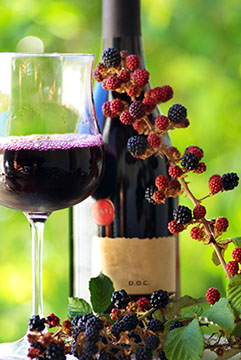
Teresa Neighbors of Palestine, Illinois shared with me her 2019 gold medal-winning recipe for blackberry wine. For her recipe she used:
• 1 gallon (3.8 L) Vintner’s Best Blackberry fruit wine base
• 4 gallons (15 L) water
• 4.5 cups (2 lbs./0.9 kg) pure cane sugar
• Red Star Côte des Blancs yeast
• Double dose of yeast nutrients
• 1 Tbsp. citric acid
• Potassium metabisulfite (KMBS)
Teresa mixes the blackberry concentrate along with all of the other ingredients into her fermenter. Vintner’s Best fruit wine bases are fruit concentrates with corn syrup, citric acid, and natural flavors that only require the addition of 4 gallons (15 L) of water and yeast to make 5 gallons (19 L) of wine. However, Teresa goes beyond those basics to make her medal-winning wines — which begins with additional sugar to boost the starting gravity.
“I add sugar to it prior to fermenting. I like a heavier blackberry! It comes in with an SG (specific gravity, after diluting) of 1.077 (18.7 °Brix) and I add enough sugar to get to 1.090 (21.6 °Brix) to ferment,” she said.
That sugar addition takes the wine from what would be approximately 10.1% ABV up to 11.8% ABV. When the gravity reaches 1.000 (0 °Brix), Teresa generally halts fermentation with SO2 to retain a little sweetness, but she will backsweeten with additional sugar after fermentation when she feels the wine could use more sweetness.
Teresa says, “every berry and fruit is a little different, so even when I’m following a recipe, the balance of sugar and acid can be slightly different. I make samples of several different sugar and pH levels, let them sit overnight for the flavors to marry, and then taste to make my decisions. My palate likes a pH of 3.1–3.3, and I always use citric acid.”
Teresa used cane sugar to boost the gravity and backsweeten her blackberry wine (as she does for most of her wines), although she has experimented with brown sugar additions prior to fermentation to increase the gravity of a persimmon wine once, which gave it a nice golden color.
Her blackberry wine was bottled at 1.020 (5.1 °Brix). Instead of simply shooting for that number, she recommends home winemakers do bench trials and see for themselves what they prefer. “The perfect balance of acid and sugar and alcohol level is determined by the mouthfeel for me,” she adds.
Strawberry Bavarian Cream
Ed Whitworth of Taylorsville, Kentucky recently won a gold medal for his strawberry and Bavarian cream wine. Ed learned a lot about winemaking from the previous generation of local home winemakers (and, of course, tells me he reads every issue of WineMaker cover-to-cover), and now he is especially active at his local winemaking supply store to help mentor the next generation of home winemakers.
For his Strawberry Bavarian Cream wine, Ed uses an old recipe as a guideline, but with the caveat that “every year your weather is different, which means the strawberries are different, so you’ve gotta play with it.” Generally, he uses the following:
• 36 lbs. (16.3 kg) strawberries (which he freezes for 30 days and then thaws completely prior to use). He puts them in a cheesecloth bag for fermentation.
• Fine granulated sugar to around 1.085 specific gravity (20.5 °Brix). This is not powdered sugar, but is finer sugar than standard granulated.
• ~2 gallons (7.6 L) spring water
• Lalvin EC-1118 yeast
• Yeast nutrient
• 1 tsp. per gallon (4 L) acid blend
• Pectic enzyme “I used to use the drops — about 40 drops for strawberries — but it seemed like it just didn’t perform.” He uses the powder now, which brings the must to a nice “bright, strawberry, rose-y color.”
• Potassium sorbate
• Campden tablets
• Lorann Oils Bavarian cream flavoring (to taste)
To start, Ed will warm a half-gallon (4 L) of spring water (never tap), and mix all of his non-strawberry ingredients into it as they dissolve better in warm water. He’ll add this and another 1.5 gallons (6 L) of water to his fermenter, then place the cheesecloth bag of strawberries into it. He lets the bag sit for a half hour, after which he squeezes it out into the fermenter. At this point he’ll know if he needs to add any more water to later fill a 5- or 6-gallon (19- or 23-L) carboy. If more water is needed he adds it now and then returns the bag to the fermenter and waits a few days to pitch his yeast. This delay in yeast pitching allows all the ingredients to mix in order to get a more accurate reading of sugar with his hydrometer.
Once fermentation is finished there is very little strawberry left in the cheesecloth bag and most of the solids will now be mixed into the wine. Because of this, he racks once per month, for at least five months, until the wine is totally sediment-free. He adds one Campden tablet at each racking — preferring to introduce SO2 little by little, rather than one large dose at the beginning.
Ed adds sugar to taste prior to bottling — again, using a recipe as a loose guideline, but trusting his own palate. He’s even more careful when adding the Bavarian cream flavoring from Lorann Oils. “You have to be very, very careful. One drop too many can be way too much. It’s very potent and not worth the risk to experiment with the whole batch.” He does a test batch with a single bottle’s worth of wine. He’ll slowly add and taste, and once the wine tastes how he wants, he’ll add the corresponding amount to the entire batch. The amount he ends up using varies from year-to-year and fruit-to-fruit.
“I made a peaches and cream wine, which won a silver, and [it and the strawberry wine] had entirely different amounts of both sugar and cream flavoring. Testing with a small amount of wine will save you a lot of potential heartache,” Ed says.
Ed adds potassium sorbate to the wine before bottling to preclude refermentation, as the wine is once again sweet. He also lets the wine rest for at least two weeks after bottling before giving them out to friends.
Port-Style Berry Wines
Alan Putnam of Montana prefers to use frozen over fresh fruit as well. “I feel I get more taste and aroma components released from previously frozen fruit. They also release their water content upon pressing.” He always cuts back on the water additions that are given in recipe books whenever possible, feeling it dilutes fruit character and intensity.
Alan makes both berry wines and berry Port-style wines, and has won nine medals for table berry wines and three for Port-style berry wines. Alan won a gold medal in 2018 for his Honeyberry Port wine (for those who aren’t familiar with honeyberries, they are an oblong berry with a similar color and taste to blueberries). In dessert wines, he feels that the key is to achieve a good balance of sweetness, acidity, and alcohol. To produce his Honeyberry Port, he used the following 5-gallon (19-L) recipe to make the initial wine, which he turned it into a Port-style afterward.
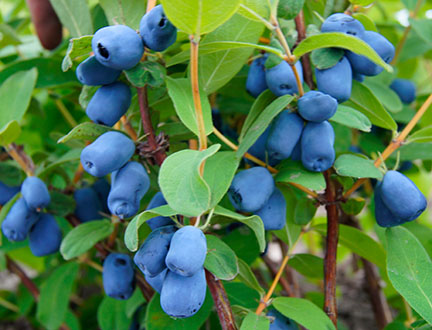
• 30 lbs. (13.6 kg) honeyberries
• 7.5 quarts (7.1 L) water (again, using the minimum amount necessary)
• ~23 cups (10 lbs./4.5 kg) white cane sugar
• 7.5 tsp. acid blend
• 2.5 tsp. pectic enzyme
• 2.5 tsp. yeast energizer
• 5 Campden tablets
• Vintner’s Harvest R-56 yeast (added on day 2)
After thawing out his fruit, Alan presses the berries just like grapes, as “this eliminates the need for a bulky bag of fruit.” The juice is mixed with the other ingredients prior to fermentation. Alan likes to add sugar to increase the gravity to 1.092–1.101 (22–24 °Brix).
Using the recipe above, the wine — ultimately destined to become Port — finished at 12.2% alcohol, which he fortified to 20% with brandy and sweetened to 8% residual sugar. Alan feels his berry wines are ready to drink after two months in bottle, his Port-style wines he likes to bottle age for at least a year prior to drinking. When making a Port-style wine in this fashion, one can of course bottle some as a fruit wine prior to fortification and also make a Port-style with the remaining portion of wine — two unique wines from the same fermentation!
As you can see, there are many variations on what can be done with berry wines—not just from the type of berry you use, but what kind of sugar you use (white, cane, brown), dry, sweet or even fortified into a Port-style. Between the immense options for different berries, blending, not to mention flavors that can be played with, the options and variations of berry wines are endless. With frozen fruit being available year round these wines can be made any time of the year. Have the winemaking itch outside of grape harvest season? Try making one for yourself! Or, if winning a gold medal is a goal of yours, once you’ve gotten to know how your berry wine changes in bottle as it ages, you may want to consider timing your fermentation so yours will be how you like it best come the next judging dates.


